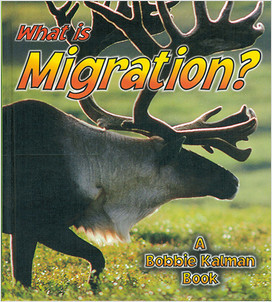This intriguing book asks children to identify objects made from different materials - metals, wool, rubber, glass, wood, and paper. Simple explanations follow each object describing where… More →
Hosted Read-Along
This title invites young artists to look at lines. Readers will learn that there are many different kinds of lines-straight, curved, zigzag, thick, thin, vertical, horizontal, and more. This… More →
When most people think of migration, they think of birds flying south to escape the cold winter - but many other animals migrate for many different reasons. From whales and deer to… More →
Leo is confused! Money is everywhere, but he never actually sees any. Then on his birthday, his aunt sends him some cash. What will Leo do with it? More →
Motion is a change in an object's position. This fascinating title explains in a clear, simple way how objects are moved by a change in energy. Simple activities show young readers how energy More →
Pollination has been in the headlines for the past few years because it directly affects the food supply on Earth. Flowering plants produce fruit or seeds only after pollination. Pollination… More →
From gentle showers to heavy downpours and slow flurries to hail, this appealing title will be a hit with readers rain or shine! Readers will learn the basic concepts of the water cycle, the… More →
Religion is the belief in a power greater than oneself. Many people call this power God. This insightful book introduces children to the world's great religions: Christianity, Judaism, Islam, More →
This book describes resources to younger readers, including capital resources and natural resources. Emphasis is placed on how most resources are of limited supply, so producers and consumers More →
This title introduces young artists to the element of shape. Readers will learn how shapes of all kinds, including geometric shapes and the organic shapes found in nature, can be used in art. More →
This book investigates how our sense of sight works, how it helps keep us safe, and how we can take care of our sense of sight. Interesting information and vivid images also explain how some… More →
From the sweet smell of cookies baking to the stinky smell of a skunk's spray, our sense of smell helps us learn about the world around us. This inviting title explains how the nose senses… More →

 Canada
Canada USA
USA













